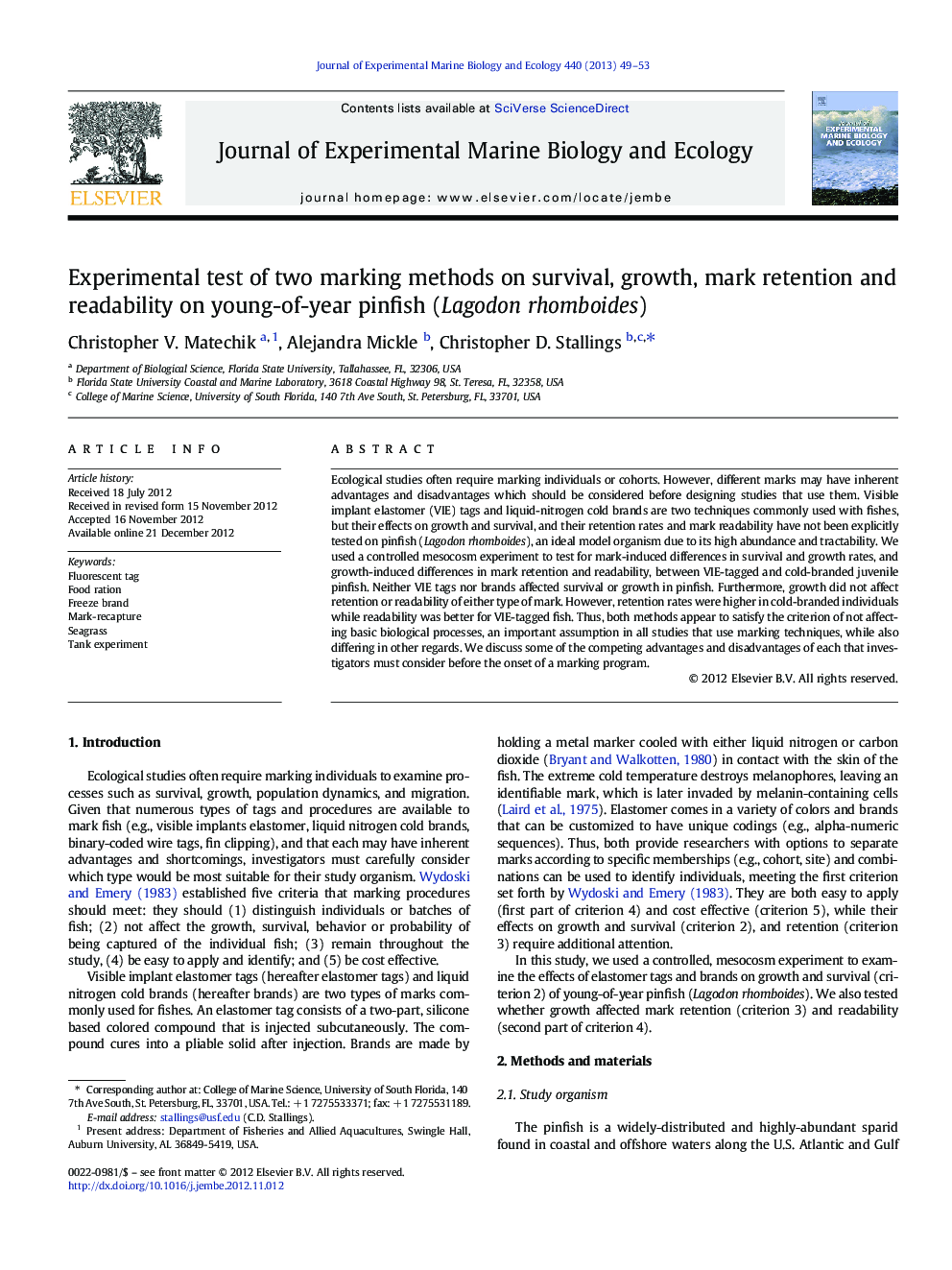| Article ID | Journal | Published Year | Pages | File Type |
|---|---|---|---|---|
| 4395799 | Journal of Experimental Marine Biology and Ecology | 2013 | 5 Pages |
Ecological studies often require marking individuals or cohorts. However, different marks may have inherent advantages and disadvantages which should be considered before designing studies that use them. Visible implant elastomer (VIE) tags and liquid-nitrogen cold brands are two techniques commonly used with fishes, but their effects on growth and survival, and their retention rates and mark readability have not been explicitly tested on pinfish (Lagodon rhomboides), an ideal model organism due to its high abundance and tractability. We used a controlled mesocosm experiment to test for mark-induced differences in survival and growth rates, and growth-induced differences in mark retention and readability, between VIE-tagged and cold-branded juvenile pinfish. Neither VIE tags nor brands affected survival or growth in pinfish. Furthermore, growth did not affect retention or readability of either type of mark. However, retention rates were higher in cold-branded individuals while readability was better for VIE-tagged fish. Thus, both methods appear to satisfy the criterion of not affecting basic biological processes, an important assumption in all studies that use marking techniques, while also differing in other regards. We discuss some of the competing advantages and disadvantages of each that investigators must consider before the onset of a marking program.
► A tank experiment crossed a marking treatment with a feeding treatment. ► Neither elastomer nor brands affected survival or growth of pinfish. ► Brands had higher retention rates but elastomer tags were easier to read. ► Both marks can be used in population studies but the choice should be contextual.
